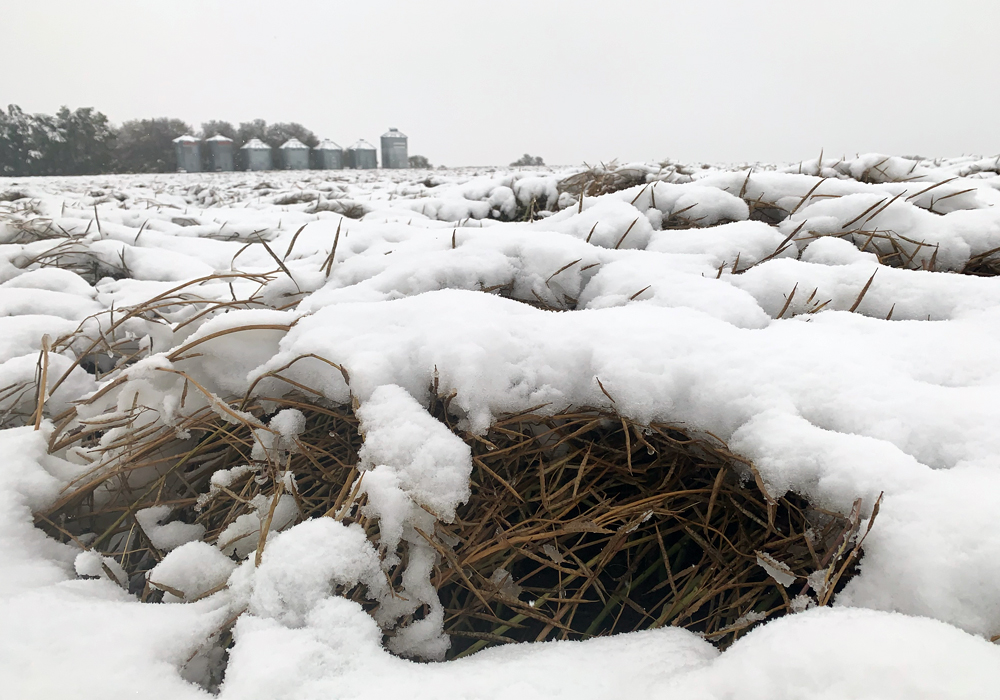There is one important factor that needs to be included in canola supply and demand estimates this year.
“We have the potential for a lot more spoilage and quality deterioration in the bin than really any other year,” said Angela Brackenreed, agronomy specialist with the Canola Council of Canada.
“It’s pretty unprecedented across the Prairies.”
She said there is no mechanism for estimating how much canola will spoil over winter and will not be available for crush or export.
But there are some “boots-on-the-ground” estimates surfacing.
Read Also

Using artificial intelligence in agriculture starts with the right data
Good data is critical as the agriculture sector increasingly adopts new AI technology to drive efficiency, sustainability and trust across all levels of the value chain.
A grower from southeastern Saskatchewan who spoke to numerous farmers from a “wide variety of locations” emailed The Western Producer with his estimate that three to five percent of the harvested canola will spoil in storage.
Using the midpoint of that range would amount to 746,000 tonnes of off-spec canola.
Brittany Ross, ag business specialist with Milligan Bio, a Foam Lake, Sask., company that buys heated, spring-thrashed and high green seed count canola, believes the number is much higher than that.
“I think you’d be looking at around 10 percent,” she said.
That would be 1.86 million tonnes of spoiled canola.
Ross said she is six months booked out on canola deliveries. She would usually be one month booked out at this time of year. Her phone is ringing off the hook with farmers looking for a home for off-spec canola.
“Guys are starting to pull from their bins and seeing surprises,” she said.
“I hear stories all the time. I feel like I’m a therapist.”
Ross said some growers say the bigger bins are contributing to the spoilage problems. Others blame new varieties. And some claim straight cut canola is causing “horror stories” due to uneven maturity.
Brackenreed said there was a “perfect storm” of unfavourable conditions. The wet harvest led to a lot of tough grain going into the bin. It also caused moulds, sprouting and high green seed counts.
That made safe storage this year extremely challenging.
“The reality is with these conditions there is no such thing,” she said.
Her best advice to growers is to keep their canola as uniformly cold as possible and to slowly warm it up come spring to avoid further damage from condensation.
In addition to stored grain losses, farmers face potential quality and yield problems with the estimated two million acres left unharvested.
Brackenreed said a surprising amount of overwintered canola made the top grade in 2016-17, the last time there was a large amount of canola that went unharvested in the fall.
But that was a different scenario. The 2019-20 crop had already suffered some serious quality issues in the fall long before the snow arrived.
She encouraged growers to consult with their crop insurance representatives before making any decisions on what to do with their overwintered canola.
Brackenreed said finding a market for spoiled canola can be tricky. There are companies that will take the crop for making lubricants and other industrial products but they tend to be small operations.
“The problem is their market becomes saturated very quickly,” she said.
Some off-grade canola makes its way into the feed market.
Darcy Slingerland, owner of Xpeller Pressing, buys heated, high-moisture or spring-thrashed canola that is crushed into a whole-fat canola meal that can be used in a variety of livestock rations.
His trucks pick up off-grade canola from farms across the Prairies. He typically buys about 8,000 to 10,000 tonnes of off-spec canola a month but is willing to expand the business.
“We’re still always looking for more,” he said.
“It’s better than throwing it in the slough.”
The whole-fat canola meal is mostly fed to cattle.
“I’ve been doing it myself for 10 years now. We haven’t had any issues,” said Slingerland.
He advised cattle farmers to consult with their nutritionists about how much canola meal to include in their rations.
The canola council has published a list of buyers of off-grade canola here. The list was updated last May 17 and is not a complete list.
Brackenreed encouraged buyers of off-grade canola that are not on the list to contact the council.
















